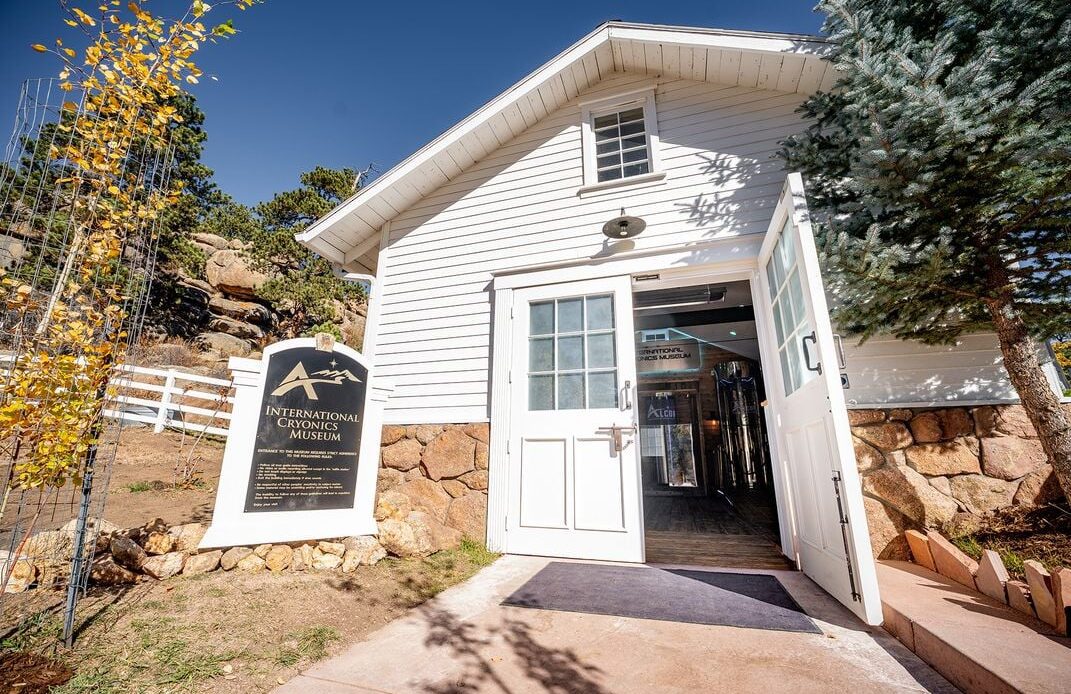The original 1909 Ice House located just steps from the iconic Stanley Hotel in Estes Park, Colorado, might not seem like much to the average sightseer. It would be easy enough to walk past the 600-square-foot outbuilding, its white clapboard exterior and humble French doors nearly imperceptible against the hotel’s Georgian Colonial Revival grandeur. The structure really isn’t remarkable in any way.
Except that it’s the new home of the world’s only museum dedicated to the science of human preservation—and of a frozen dead guy named Bredo Morstoel.
Opened this past December in partnership with Alcor, a nonprofit cryonics research organization based in Scottsdale, Arizona, the International Cryonics Museum’s mission is to educate people of all walks of life about the hard science of cryonic preservation. “Meaning long-term, ultra-cold storage of human remains for possible future organ banking and transplantation of viable organs, up to and including the brain,” says James Arrowood, Alcor’s co-chief executive officer.
And the Norwegian man known affectionately as “Grandpa Bredo” is helping achieve that.
The museum is housed in an obsolete building at the Stanley Hotel once used to store ice from a nearby pond to refrigerate the hotel’s food and beverage.
Visit Estes Park
“Part of [exhibiting] a frozen dead guy was to educate the public in a fun and friendly way about a very difficult topic of death and organ donation,” Arrowood says.
Using subfreezing temperatures (lower than minus 130 degrees Celsius or minus 202 degrees Fahrenheit) to pause the dying process and preserve life, according to Alcor, the science originated in 1962 with the book The Prospect of Immortality, written by “Father of Cryonics” Robert Ettinger. The next 60-plus years of its history are documented in the museum, with stories about pioneers and displayed artifacts. One such object is a lid from a cylindrical steel chamber called a “dewar,” which acts like a thermos to preserve cryogenically frozen bodies in liquid nitrogen. Visitors can even step inside one for a unique photo opportunity.
But the museum’s main…
Click Here to Read the Full Original Article at Travel | smithsonianmag.com…
